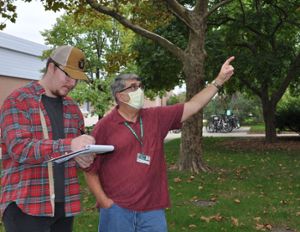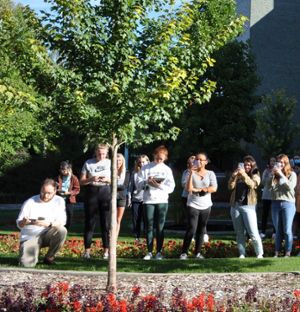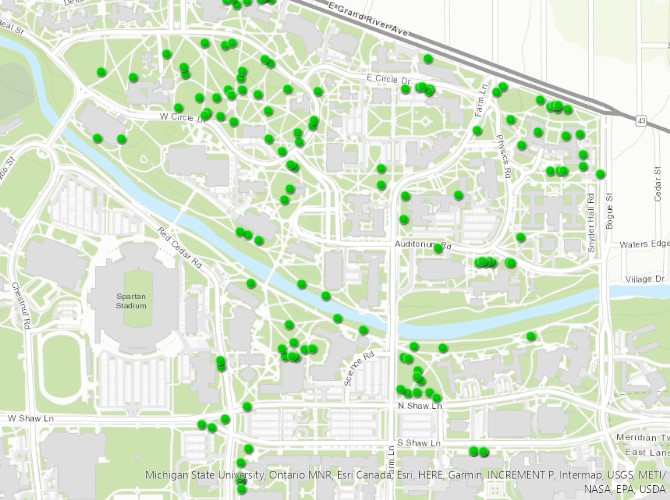Students learn from, appreciate fall leaf change on campus
Michigan State University has one of the most beautiful campuses in the Midwest. This time of year it’s common to see students, staff and faculty gazing at the spectacular trees, in awe of the beautifully colored leaves changing from green to fiery red, yellow and orange.
Not everyone observing this beautiful natural phenomenon are doing it simply for their own personal enjoyment. Around 400 students in two sections of introductory biology are observing the changing of the leaves as part of a project that studies autumn tree phenology—the study of recurring natural events, such as color change in leaves, migrations of birds and butterflies, and hibernation in many animals.

This project started in 2008 and is the brainchild of Tammy Long, an associate professor in the Department of Plant Biology in the College of Natural Science. In 2012, the project was selected as the recipient of the AAAS Science Prize for Inquiry-Based Instruction and published in Science (Long & Wyse, 2012).
“I originally designed this project for the introductory biology labs,” Long said. “But after collaborating with my plant biology colleagues associate professor Andrew Jarosz and postdoctoral associate Nate Emery we re-envisioned how the study could be managed as part of a large-enrollment lecture course.”
The study tracks 150 trees on campus across 10 species, including maples, oaks, sycamores, and elms. Each student selects two trees to study for the semester and each tree is independently sampled by students in different class sections. Each week, students estimate color change and leaf fall, and upload photos of their trees to a central database.
“I love working with students and giving them reasons to go outside, observe, and be curious,” Long said. “Students develop a bond with their trees. They have a personal affection and sometimes even name their trees. I love that.”

“This project has been fun and gotten me back into research,” said Noel Sheffer, a pre-med student in Jarosz’s class majoring in human biology. “Getting out and doing field work is a new experience for me. I think it is important to learn science, and most importantly research, with a hands-on approach to apply what is being learned in classroom in a real-world setting.”
Later in the semester, students work in teams to analyze data and test hypotheses about patterns within or across years and species. A version of the classroom protocol and supporting materials are published in CourseSource (Emery et al., 2019), but the approach continues to evolve each year as the dataset grows and new people bring their ideas to the project.
“The W.J. Beal Botanical Garden, in particular, has been an important partner throughout this project,” Jarosz said. “Jeff Wilson and Frank Telewski worked with the team to tag trees and create a special collection in the Campus Interactive Tree Map to make it easier for students to find and identify their trees.”

Anyone can determine exactly where the trees in this study are located on campus by going to the Campus Interactive Tree Map and filter for the collection “BS162.”
“Our primary challenge is how to engage students in original inquiry, while at the same time, ensuring consistency and reliability in the student-generated data,” Long said. “Our goal is to create a robust database that can document year-to-year variation as well as long-term change in phenologic patterns.”
Long is looking to expand the project to other classes and will be partnering with colleagues at the University of Nebraska-Lincoln this year to add to the dataset and expand the kinds of questions students can ask and answer.
Banner Image: MSU students learn about field work and contribute to a research project that tracks autumn leaf color changes. Photo: Jeff Mason